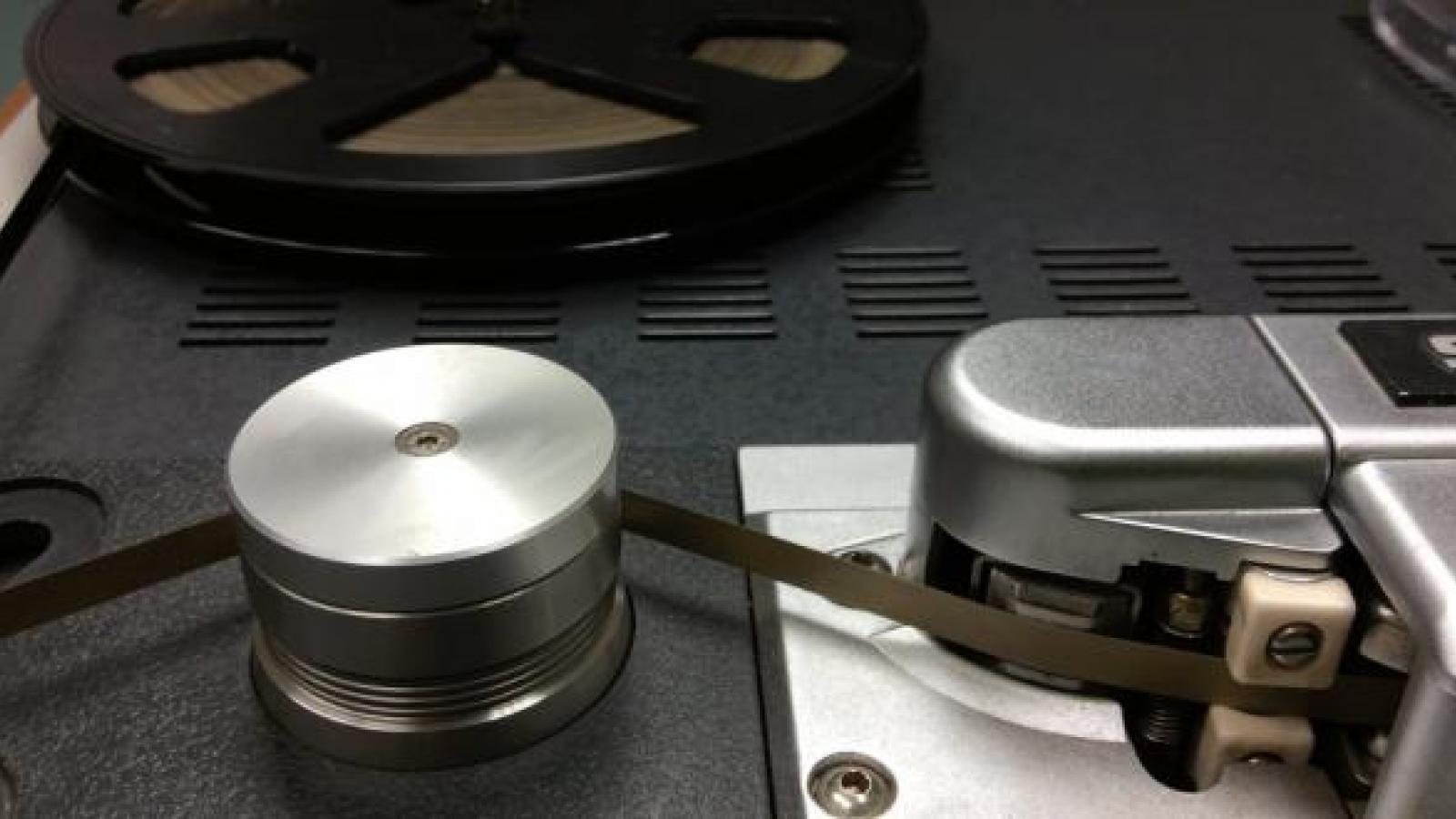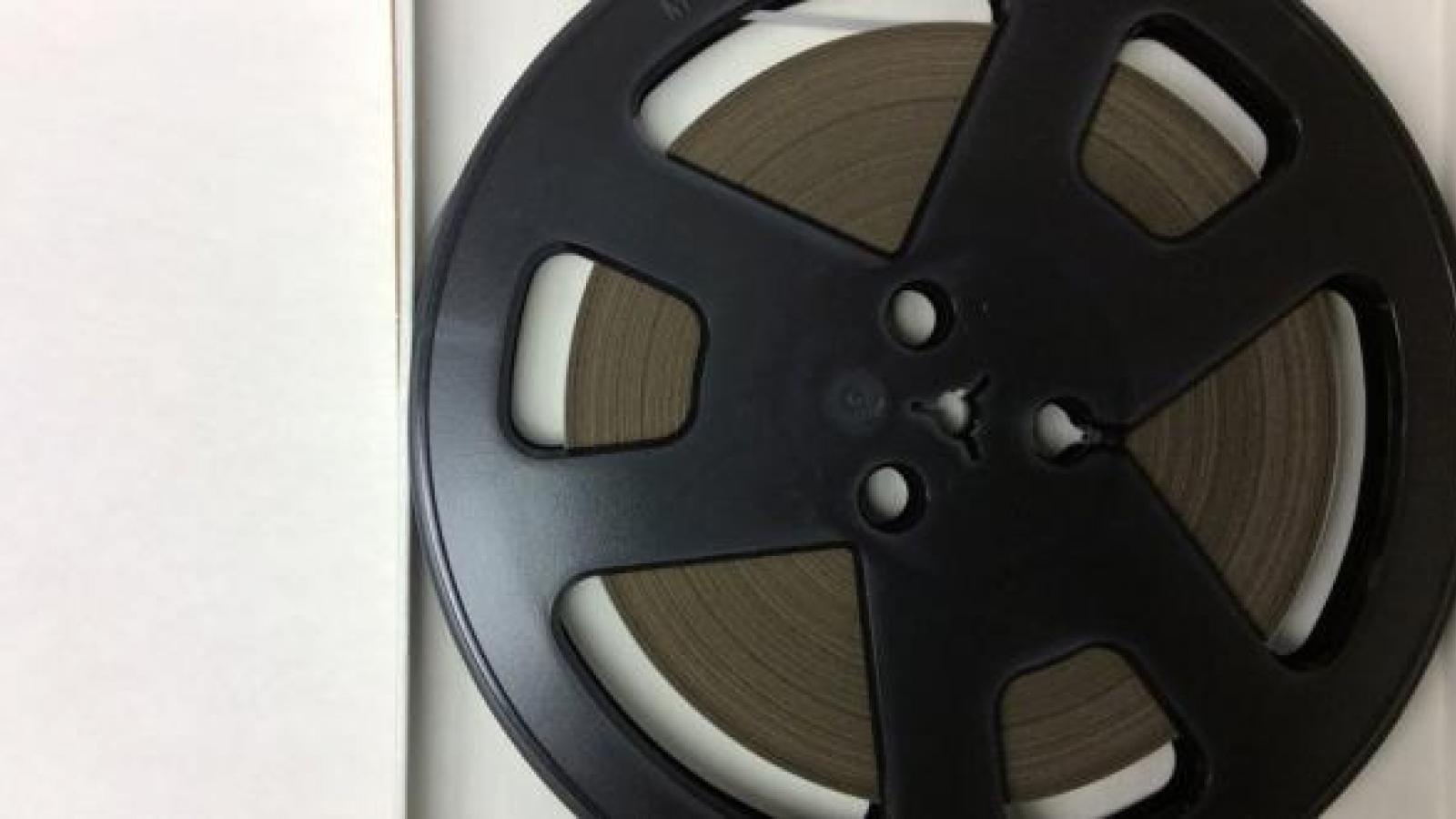Here you can listen to some recordings of historical importance.
Choose from the Lecture, Radio Program or Fun Recordings below.
All original recordings were made on open reel tapes between 1949 and 1959 which were digitized in the summer of 2017.
Recordings
Don Borror recorded Alan Cruickshank, renowned ornithologist and photographer as well as instructor at the Audubon camp on Hog Island, Maine, imitating bird songs.
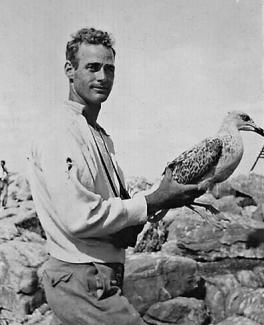
Have you ever tried to imitate a Barred Owl, American Bittern or Black-billed Cuckoo? Listen to Alan Cruickshank imitating bird songs (5 min) during a program on Hog Island, Maine:

Here are bird notes (30 min each) from Don Borror. You may be surprised to hear a cow and some chickens mixed in, as he describes them himself:
"A random selection of bird songs from field tapes with behavioral observations."
Borror Notes Side A
Borror Notes Side B
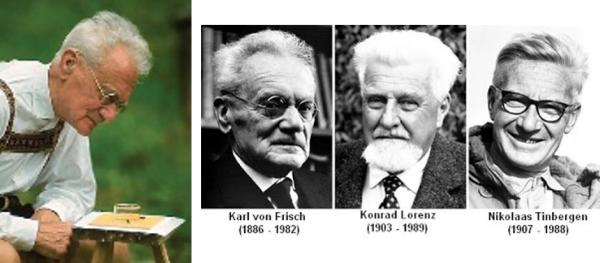
27 April 1949: Karl von Frisch, a Nobel Prize winning scientist (together with Konrad Lorenz, Nikolas Tinbergen, 1973) who studied bees and bee communication at the University of Graz, in Austria gave a guest lecture at The Ohio State University on The language of bees. Listen to the first 8 minutes of his speech here:
Karl von Frisch discovered that bees communicate the location of food sources to each other through complex circle and waggle dances. Beekeepers had observed these curious movements in hives, and others had speculated about the possibility of a bee language used to manage the work of the hive.
But it took a scientist, like von Frisch to determine that the bees’ dances communicated precise information about the distance and direction of food sources. If you would like to hear the rest of his lecture, please contact the Curator.
Due to the rather poor quality of the recording (it is over 70 years old!), here is a transcript of Karl von Frisch's lecture (let us know if you can fill in the gaps):
Ladies and Gentlemen,
It is a great pleasure for me to be in your country again, and to tell you today about my work through the last years, about the Language of Bees.
In Austria, I made experiments with bees during summertime and if I need some bees for this experiment, I put some sheets of paper, smeared with honey on the experimental paper in the open area. Then I often have to wait for many hours, for many days even until finally a bee discovers the feeding place.
But as soon as one bee has found the honey, there will many bees appear, like several hundred within a short time. They all come from the same hive and the first discoverer [must] announce its discovery at home. I was curious to see, how this is possible. But they cannot recognize what happens in a normal hive. The bees direct them with the first flight. They cannot see what happens between experiments.
To observe the bees, I constructed an observation hive. Here they [ …] and they can observe through glass window every bee. But it was necessary too, to number the bees. To be able to recognize every bee […] and I took great effort painting them with five different colors.
White on the forepart of the thorax, that means number one, red is two, blue is three, yellow four, green five. And the same color on the hind spot of the thorax means six, seven, eight, nine and zero.
Now you can add the two and need to remember which is one, which is two, which is three, it is almost […] 3 on the forepart and zero on the hind part is number 30, three – zero. […] on the abdomen [...] counted nine and that was left for our experiment.
Now, we see what they like. Now we put a black dish with a little sugar water near the beehive. And a bee which has discovered this artificial feeding place, is marked with color, with number and observed at the moment.
First she delivers the sugar water to other bees in the hive. And then she begins to dance. She performs a round dance. On the same spot, she turns round, once to the right, once to the left, very vigorously, often half a minute or longer, on the same spot. The dances are often repeated. on another spot. And afterwards she returns to the feeding place.
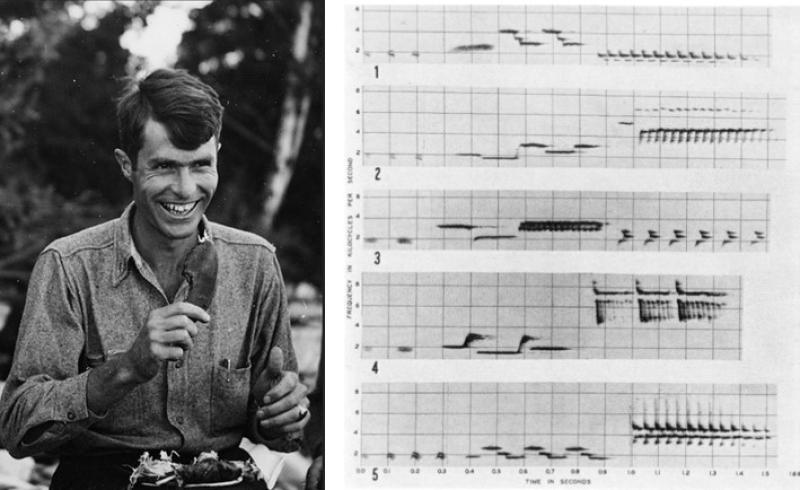
31 March 1955: A spoken paper (20 min) by Don Borror to the Kirkland Lake Nature Club, Ontario.
Dr. Borror talks about his research on Vocal gymnastics in Wood Thrush song, a study that lead to a published paper together with Dr. Carl Reese. The introduction is by William Gunn, field secretary of the Federation of Ontario naturalists. If you think Wood Thrush song is amazingly beautiful and intricate, listen to a slowed down version during this program to hear its full beauty.
Reference
Borror, D. J., & Reese, C. R. (1956). Vocal gymnastics in wood thrush songs. Ohio Journal of Science: Volume 56, Issue 3 (May, 1956)
Our lab has a long-standing partnership with WOSU Radio. Both Don Borror, founder and director of the lab and his then graduate student Richard D Alexander gave radio programs about their research.
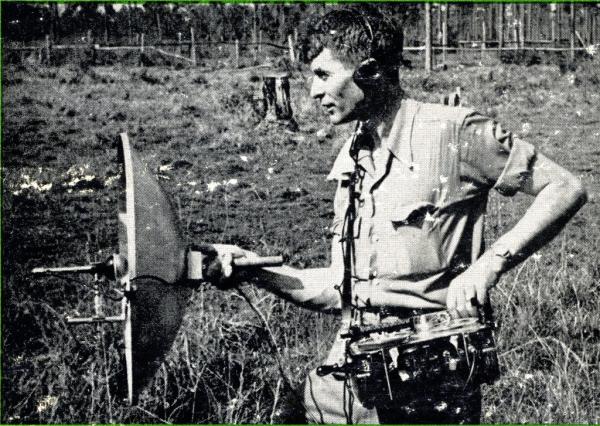
Enjoy these Sunday afternoon programs (30 min each) broadcasted in spring of 1959:
May 3, Learning bird songs
May 10, Making birdsong recordings
May 17, A bird walk
May 24, A(nother) bird walk
May 31, Types of songs and calls and their significance to birds
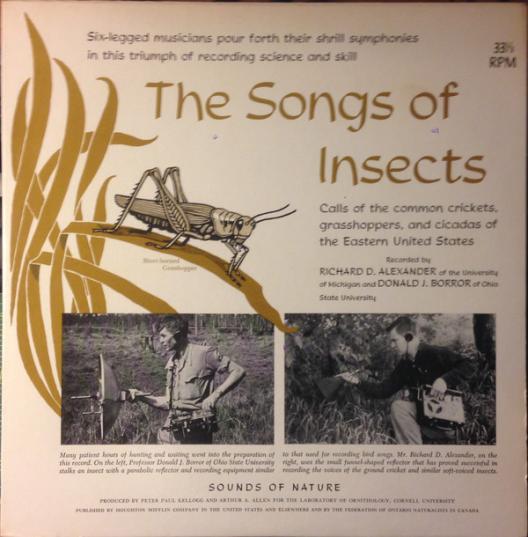
Don Borror also talked about his research subjects, The amazing insects, on May 18, 1955 (30 min).
Compare this to Richard D Alexander's program on Insect sounds (30 min). Richard D Alexander is Emeritus Professor and Emeritus Curator of Insects at the Museum of Zoology of the University of Michigan in Ann Arbor; at the time of the radio program, he was a PhD student of Don Borror. Dr. Alexander graduated from OSU in 1956.

